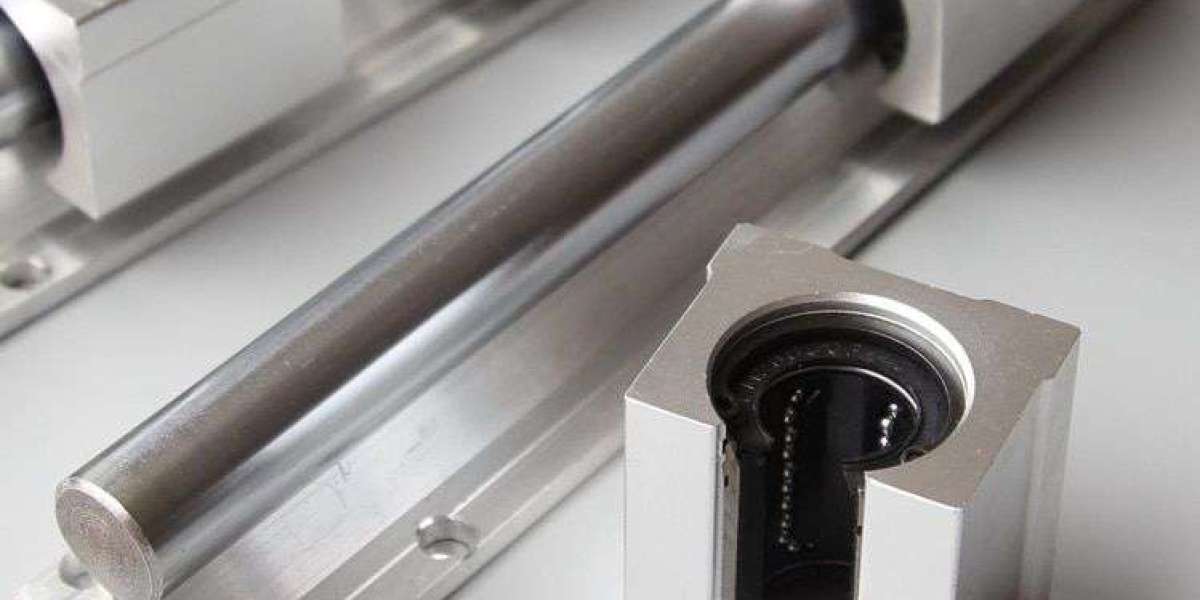This technical comparison examines linear guide rails against alternative linear motion systems, highlighting their differences in design, performance, and applications. We'll explore the engineering principles behind each technology, present selection guidelines, and provide real-world examples to illustrate best practices.
Linear Guide Rails: Core Characteristics
Fundamental Design
Linear guide rails consist of:
- •
A hardened steel or aluminum rail with precision-machined raceways
- •
A carriage containing recirculating rolling elements
- •
A preload system for adjusting clearance
Key Performance Attributes
Parameter | Typical Range |
|---|---|
Load Capacity | Up to 200,000 N |
Precision | ±0.001 mm |
Speed | Up to 2 m/s |
Rigidity | Very High |
Cost | Moderate-High |
Comparison with Alternative Linear Motion Systems
1. Linear Guide Rails vs. Linear Bearings
Linear bearings are often used as a general term that can include various implementations, but typically refer to systems similar to linear guide rails.
Comparison Factor | Linear Guide Rails | Linear Bearings | Advantage |
|---|---|---|---|
Load Capacity | Up to 200,000 N | Up to 100,000 N | Linear Guide Rails |
Precision | ±0.001 mm | ±0.001-0.01 mm | Comparable |
Rigidity | Excellent | Good | Linear Guide Rails |
Cost | Moderate-High | Moderate | Linear Bearings |
Best For | Heavy-duty, high-precision | General industrial | Depends on requirements |
Key Insight: Linear guide rails generally offer superior rigidity and load capacity for demanding applications, while linear bearings may be sufficient for less demanding applications at lower cost.
2. Linear Guide Rails vs. Ball Screws
Ball screws convert rotary motion to linear motion using a threaded shaft and nut with recirculating balls.
Comparison Factor | Linear Guide Rails | Ball Screws | Advantage |
|---|---|---|---|
Motion Type | Direct Linear | Rotary-to-Linear | Depends on application |
Load Capacity | Up to 200,000 N | Up to 100,000 N | Linear Guide Rails |
Precision | ±0.001 mm | ±0.0001 mm | Ball Screws |
Speed | Up to 2 m/s | Up to 1 m/s | Linear Guide Rails |
Backlash | Adjustable | Minimal | Ball Screws |
Best For | High-speed, multi-axis | High-thrust, precision | Depends on requirements |
Key Insight: Ball screws provide superior precision and thrust capabilities but are limited in speed and typically more complex to implement than linear guide rails.
3. Linear Guide Rails vs. Belt-Driven Systems
Belt-driven systems use a motorized pulley and belt to create linear motion.
Comparison Factor | Linear Guide Rails | Belt-Driven Systems | Advantage |
|---|---|---|---|
Load Capacity | Up to 200,000 N | Up to 1,000 N | Linear Guide Rails |
Speed | Up to 2 m/s | Up to 10 m/s | Belt-Driven Systems |
Precision | ±0.001 mm | ±0.01 mm | Linear Guide Rails |
Rigidity | Excellent | Poor | Linear Guide Rails |
Cost | Moderate-High | Low | Belt-Driven Systems |
Best For | Precision, heavy loads | High-speed, light loads | Depends on requirements |
Key Insight: Belt-driven systems excel in high-speed, lightweight applications but cannot match the precision, rigidity, or load capacity of linear guide rails.
Hybrid System Approaches
In many advanced applications, engineers combine linear guide rails with other technologies:
- •
Linear Guide Rails + Ball Screws → Combines precision and rigidity
- •
Linear Guide Rails + Belt Drives → High-speed with precise positioning
- •
Multi-Axis Integrated Systems → Used in CNC machines and robotics
Maintenance and Performance Optimization
1. Preventive Maintenance Strategies
- •
Regular Inspection → Check for wear, misalignment, or damage
- •
Lubrication → Maintain proper lubrication schedules
- •
Cleaning → Keep systems free from contaminants
- •
Adjustment → Periodic preload verification
2. Performance Monitoring
- •
Accuracy Verification → Regular positional accuracy checks
- •
Vibration Analysis → Monitor for unusual patterns
- •
Wear Assessment → Track component wear patterns
3. Predictive Maintenance
- •
Condition Monitoring → Implement sensors for early detection
- •
Usage Tracking → Monitor operational parameters
- •
Maintenance Scheduling → Based on actual usage patterns
Future Trends in Linear Guide Rail Technology
The linear guide rail industry continues to evolve with advancing technologies:
- •
Advanced Materials → High-strength alloys and composites
- •
Smart Systems → Integrated sensors and predictive analytics
- •
Customization → Modular and application-specific designs
Conclusion
Linear guide rails represent a critical advancement in linear motion technology, offering a combination of precision, durability, and efficiency that is unmatched by alternative systems. By understanding their design principles, types, applications, and selection criteria, engineers can specify systems that meet their exact requirements while providing long-term value.








